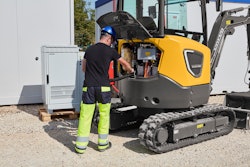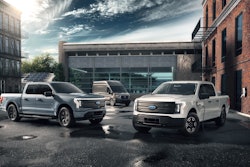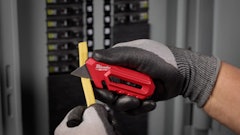
Electric vehicle (EV) adoption is becoming more crucial, considering serious climate change threats, pushing corporations to evaluate what their EV journey might be as part of broader environmental, social and governance (ESG) goals, if they haven’t already.
Understandably, it may be hard for some organizations to see the forest through the trees—or in this case, EVs as part of or as their full fleet. There are ways of looking at how your fleet can get ahead, despite the misconceptions around cost, efficacy and policy. Now more than ever, the incentives for fleet adoption—sustainability, corporate social responsibility and diversity of EV models—are much stronger and further pushing the tipping point for EVs to have a leading role in fleet.
Increased Sustainability Policies & Incentives
According to the U.S. Environmental Protection Agency, the average passenger vehicle emits about 4.6 metric tons of carbon dioxide per year. Collectively, cars and trucks account for nearly one-third of all U.S. emissions, surpassing the electricity, industry and agriculture sectors. Clearly, interventions targeted at the automotive industry are warranted.
Policies on the state and federal government levels have been in the works to mitigate climate change and support EVs. The State of California’s proposal to ban the sale of new gas cars by 2035 to ramp up the sale of electric and zero-emissions vehicles is expected to be voted on in August. This proposal excludes medium- and heavy-duty vehicles such as trucks and construction equipment, which would need to be zero-emission vehicles by 2045. Further alleviating concerns around cost is the newly passed Inflation Reduction Act which includes $369 billion in climate- and energy-related funding. This includes tax credits for EVs.
Increased Focus on ESG and Corporate Social Responsibility
Corporations are finding it increasingly important to have a stake in corporate social responsibility, especially as it relates to ESG. This is driven by consumer expectations that the organizations they buy from or do business with match their own moral opinions and beliefs. According to PricewaterhouseCoopers (PwC)’s 2021 consumer intelligence survey, 83 percent of consumers polled in March and April believe that companies should be actively shaping ESG best practices.
With ESG—environmental social governance—being one of the biggest acronyms used in corporate boardrooms today, there’s pressure to be a market leader in this arena. While big name brands are setting their ESG goal posts, an ESG knowledge gap still exists and remains too wide for others. EVs have become a primary way for companies to drive their ESG goals forward because they reduce emissions, support clean energy initiatives and assist in meeting federal mandates.
Greater Availability and Diversity of EV Models
For years, EVs have been overlooked in the fleet space because they were almost always small city sedans like the Nissan Leaf, Tesla Model 3 and Chevy Bolt. All these models can be great for sales fleets, but not so much for the industrial sector where work trucks and delivery vans are needed.
Today, with EV work trucks and delivery vans ramping up in the market, there is more opportunity for the fleet industry to have a stake in zero emissions.
Ready to Make the Shift
Positive EV incentives aside, there still remains the question: how do I electrify my fleet? It’s important to consider it a journey marked with five key steps: learn and understand the EV landscape; determine and align around your organizations’ ESG strategic position; develop an EV adoption plan; start big or small with a partner; and adopt EVs and make your commitment.
EV innovation is here and still advancing. Policymakers are continuing to work on ways to make electrification a smoother process for consumers and businesses alike. There’s never been a better time to ask if your fleet is ready to make the shift.




















